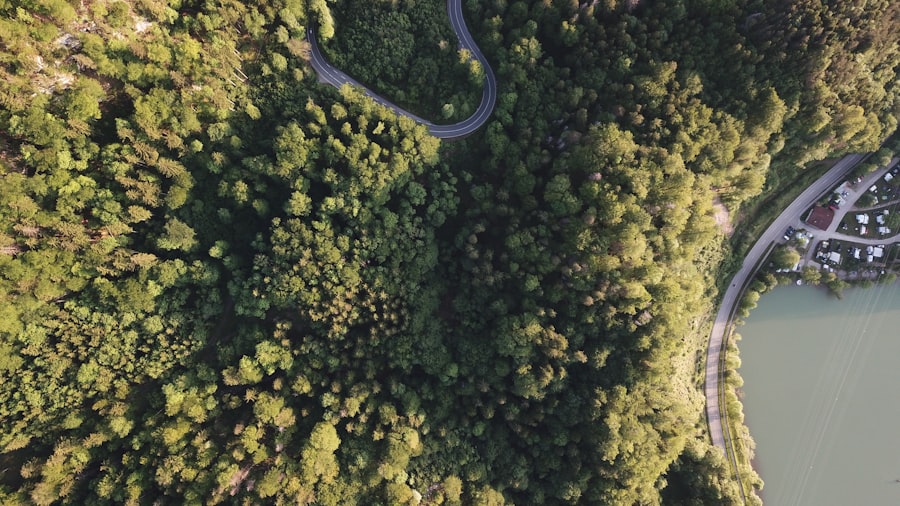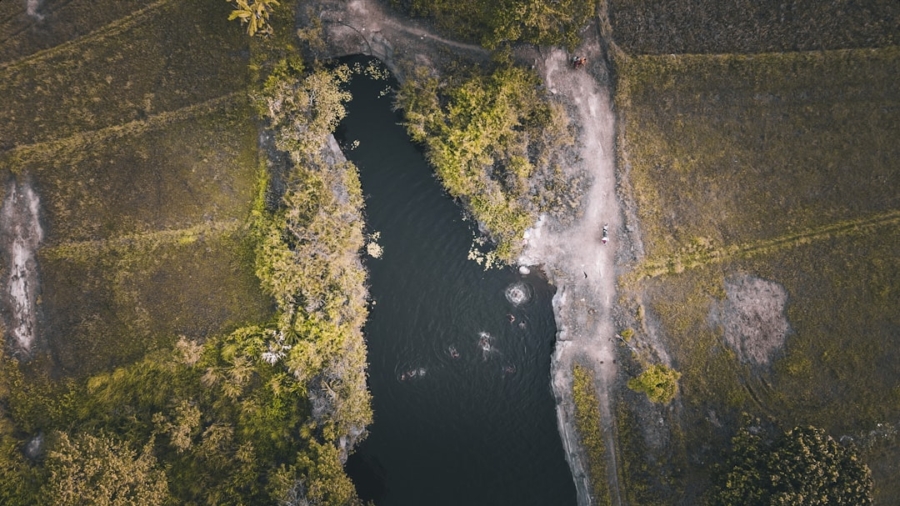In an era where technology permeates every aspect of our lives, the intersection of technology and nature presents a fascinating landscape for exploration. This convergence is not merely a juxtaposition of two seemingly disparate realms; rather, it is a dynamic interplay that has the potential to enhance our understanding of the natural world while simultaneously fostering a deeper appreciation for its complexities. As we navigate through urban environments increasingly dominated by screens and digital interfaces, the allure of nature remains a powerful force.
The challenge lies in finding innovative ways to bridge the gap between these two worlds, allowing technology to serve as a conduit for deeper engagement with the environment. The integration of technology into nature experiences can take many forms, from virtual reality simulations that transport users to remote ecosystems to wearable devices that track environmental changes in real-time. This article delves into various technological advancements that are reshaping how we interact with nature, examining their implications for conservation, education, and personal well-being.
By exploring these intersections, we can better understand how technology can enhance our connection to the natural world while also addressing pressing environmental challenges.
Key Takeaways
- Technology has the potential to enhance our connection with nature and improve conservation efforts.
- Virtual and augmented reality can provide immersive nature experiences and educational opportunities.
- Wearable technology allows for real-time interaction with the natural environment and wildlife.
- Drones and robotics are transforming conservation and wildlife monitoring efforts.
- Artificial intelligence can improve nature education and interpretation, leading to better understanding and appreciation of the natural world.
Virtual Reality and Augmented Reality: Enhancing Nature Exploration
Virtual reality (VR) and augmented reality (AR) have emerged as transformative tools in the realm of nature exploration, offering immersive experiences that transcend geographical limitations. VR allows users to step into meticulously crafted digital environments, simulating the experience of hiking through dense forests, diving into coral reefs, or observing wildlife in their natural habitats. For instance, platforms like Oculus have developed applications that enable users to explore the Amazon rainforest or the Great Barrier Reef without leaving their homes.
These experiences not only provide entertainment but also serve educational purposes, raising awareness about biodiversity and environmental issues. AR, on the other hand, overlays digital information onto the real world, enhancing our perception of nature as we experience it firsthand. Applications such as Google Lens allow users to identify plant species or animal tracks in real-time, enriching outdoor excursions with contextual knowledge.
Imagine hiking through a national park and pointing your smartphone at a tree to learn about its species, age, and ecological significance. This blend of digital information with physical exploration fosters a more profound connection to the environment, encouraging curiosity and engagement with the natural world.
Wearable Technology: Connecting Humans with the Natural Environment

Wearable technology has revolutionized how individuals interact with their surroundings, particularly in natural settings. Devices such as smartwatches and fitness trackers not only monitor physical activity but also provide insights into environmental conditions. For example, wearables equipped with GPS can track hiking routes while offering real-time data on altitude changes, heart rate, and even air quality.
This information empowers users to make informed decisions about their outdoor activities, promoting safety and enhancing the overall experience. Moreover, specialized wearables designed for environmental monitoring are gaining traction among conservationists and researchers. Devices like the BioLite SolarPanel 10+ not only charge electronic devices but also feature sensors that measure solar energy output and environmental conditions.
By integrating wearables into outdoor experiences, individuals become active participants in environmental stewardship, fostering a sense of responsibility toward the ecosystems they explore.
Drones and Robotics: Revolutionizing Conservation and Wildlife Monitoring
The advent of drones and robotics has ushered in a new era of conservation efforts and wildlife monitoring. Drones equipped with high-resolution cameras and thermal imaging technology can survey vast areas of land quickly and efficiently, providing critical data on wildlife populations and habitat conditions. For instance, organizations like Conservation Drones utilize unmanned aerial vehicles to monitor endangered species in remote regions, allowing researchers to gather data without disturbing fragile ecosystems.
This aerial perspective not only enhances our understanding of wildlife behavior but also aids in anti-poaching efforts by identifying illegal activities from above. Robotic technologies are also making significant strides in conservation applications. Autonomous underwater vehicles (AUVs) are being deployed to monitor marine ecosystems, collecting data on water quality, temperature, and biodiversity.
These robots can navigate challenging underwater terrains that are often inaccessible to human divers, providing invaluable insights into ocean health. By leveraging drones and robotics, conservationists can gather data more efficiently than ever before, enabling timely interventions to protect vulnerable species and habitats.
Artificial Intelligence: Improving Nature Education and Interpretation
Artificial intelligence (AI) is playing an increasingly vital role in enhancing nature education and interpretation. Machine learning algorithms can analyze vast datasets to identify patterns and trends in ecological research, providing insights that were previously unattainable. For example, AI-driven platforms can process images from camera traps set up in wildlife habitats to identify species presence and behavior automatically.
This technology not only streamlines data collection but also allows researchers to focus on interpreting findings rather than spending countless hours sifting through images. In educational settings, AI-powered chatbots and virtual assistants are being utilized to engage learners in interactive discussions about nature. These tools can answer questions about local flora and fauna or provide information on conservation practices tailored to specific regions.
By making nature education more accessible and engaging, AI fosters a sense of curiosity among learners of all ages, encouraging them to explore their surroundings with a newfound appreciation for biodiversity.
Sustainable Technology: Minimizing Environmental Impact in Nature Experiences

As technology continues to evolve, there is an increasing emphasis on sustainability within tech-augmented nature experiences. Innovations aimed at minimizing environmental impact are becoming essential components of outdoor activities. For instance, solar-powered devices are gaining popularity among outdoor enthusiasts who seek to reduce their carbon footprint while enjoying nature.
Portable solar chargers allow users to power their devices without relying on traditional energy sources, promoting eco-friendly practices during outdoor adventures. Additionally, sustainable materials are being integrated into outdoor gear and equipment design. Companies are developing biodegradable tents made from plant-based materials or backpacks crafted from recycled plastics.
These advancements not only reduce waste but also encourage consumers to make environmentally conscious choices when selecting outdoor gear. By prioritizing sustainability in technology used for nature experiences, we can ensure that our interactions with the environment are both enjoyable and responsible.
Challenges and Ethical Considerations in Tech-Augmented Nature Experiences
While the integration of technology into nature experiences offers numerous benefits, it also raises important challenges and ethical considerations. One significant concern is the potential for over-reliance on technology, which may detract from the intrinsic value of direct engagement with nature. As individuals become increasingly reliant on apps and devices for navigation or information, there is a risk that they may miss out on the sensory experiences that come from being fully present in natural settings.
Moreover, the use of drones and other monitoring technologies raises ethical questions regarding privacy and disturbance to wildlife. The presence of drones can disrupt animal behavior or intrude upon sensitive habitats, leading to unintended consequences for ecosystems. Striking a balance between technological advancement and ethical responsibility is crucial as we navigate this evolving landscape.
Conservationists must consider the potential impacts of their tools on both wildlife and human experiences in nature.
The Future of Tech-Augmented Nature Experiences: Opportunities and Possibilities
Looking ahead, the future of tech-augmented nature experiences holds immense promise for enhancing our relationship with the environment.
For instance, advancements in AI could lead to personalized nature experiences tailored to individual preferences and learning styles, fostering deeper connections with specific ecosystems.
Furthermore, collaborative efforts between technologists and conservationists may yield groundbreaking tools for environmental monitoring and education. Imagine a future where community-driven data collection initiatives leverage smartphone apps to track local biodiversity or report environmental changes in real-time. Such initiatives could empower individuals to take an active role in conservation efforts while fostering a sense of community around shared environmental goals.
As we embrace these opportunities, it is essential to remain mindful of the ethical implications associated with tech-augmented nature experiences. By prioritizing sustainability and responsible use of technology, we can ensure that our interactions with the natural world are enriching rather than exploitative. The intersection of technology and nature presents a unique opportunity for growth, understanding, and stewardship—one that has the potential to shape our relationship with the environment for generations to come.
In exploring the future of tech-augmented nature experiences, it’s fascinating to consider how technology is enhancing various fields, including translation services. An interesting related article is Discover the Best Free Software for Translation Today, which delves into the advancements in translation software. Just as technology is transforming how we interact with nature, it is also revolutionizing communication across languages, making global interactions more seamless and accessible. This parallel highlights the broader impact of technological innovations in enhancing human experiences and connectivity.
FAQs
What are tech-augmented nature experiences?
Tech-augmented nature experiences refer to the use of technology, such as virtual reality, augmented reality, and interactive apps, to enhance and enrich people’s interactions with the natural world.
How can technology enhance nature experiences?
Technology can enhance nature experiences by providing immersive and interactive ways for people to engage with the natural world, such as virtual tours of national parks, interactive wildlife tracking apps, and augmented reality nature walks.
What are some examples of tech-augmented nature experiences?
Examples of tech-augmented nature experiences include virtual reality nature documentaries, augmented reality nature trails, interactive wildlife identification apps, and immersive nature-themed video games.
What are the potential benefits of tech-augmented nature experiences?
Tech-augmented nature experiences can provide opportunities for people to connect with nature in new and engaging ways, educate and raise awareness about environmental issues, and inspire conservation efforts.
Are there any potential drawbacks to tech-augmented nature experiences?
Some potential drawbacks of tech-augmented nature experiences include the risk of over-reliance on technology, potential negative impacts on the natural environment, and the potential for technology to detract from the authentic experience of nature.

